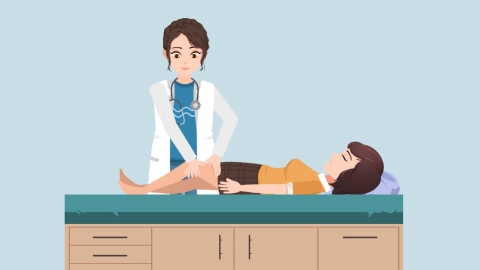What causes leg and foot swelling after a cerebral infarction?
Cerebral infarction refers to cerebral infarction. Leg and foot swelling after cerebral infarction may be caused by reduced activity, improper posture, deep vein thrombosis, heart failure, kidney failure, etc., and improvement can be made according to different situations. It is recommended to visit a hospital promptly and receive treatment under the guidance of a physician.

1. Reduced activity: After cerebral infarction, patients may have limited limb movement and remain bedridden or sit for long periods, leading to slower circulation and poor blood return in the lower limbs, causing leg and foot swelling. Improvement methods include increasing activity as much as possible and engaging in rehabilitation training such as sitting at the bedside, standing, and walking when the medical condition permits. Lower limb massage with assistance from family members can also help promote blood circulation.
2. Improper posture: When lying down, the patient's lower limbs may hang down for a prolonged period or be compressed during sleep, affecting blood return and causing leg swelling. Adjust the posture by elevating the lower limbs above heart level while lying down to promote blood return, and avoid compressing the lower limbs during sleep.
3. Deep vein thrombosis: Patients after cerebral infarction may have a hypercoagulable blood state, combined with reduced activity, which makes them prone to developing lower limb deep vein thrombosis, resulting in swelling, pain, and increased skin temperature in the lower limbs. It is recommended to use anticoagulant medications such as low molecular weight heparin calcium injection, warfarin sodium tablets, and rivaroxaban tablets under a physician's guidance to prevent further thrombus development.
4. Heart failure: Cerebral infarction may affect cardiac function, or the patient may already have underlying heart disease, leading to impaired venous return due to reduced cardiac function and resulting in leg swelling. Symptoms such as dyspnea and fatigue may also occur. Patients can follow medical advice to use medications such as digoxin tablets, furosemide tablets, and spironolactone tablets to improve cardiac function and reduce edema.
5. Kidney failure: Metabolic disturbances following cerebral infarction or pre-existing kidney disease can lead to renal insufficiency, causing water and sodium retention, resulting in leg swelling. Symptoms such as proteinuria, hematuria, and fatigue may also occur. Patients can use medications such as uremic clearance granules, kidney failure relief capsules, and furosemide tablets under medical guidance to promote recovery.
In daily life, patients should be encouraged to elevate their lower limbs and perform joint movements to promote blood return. Additionally, compression stockings or other assistive devices can be used to reduce lower limb edema.
References:
[1] Zhai Zhenfeng, Zhao Yue. Analysis of influencing factors of hypertension complicated with cerebral infarction and diagnostic value of homocysteine, D-dimer, and procalcitonin in hypertension complicated with cerebral infarction [J]. The Physician, 2025, 10(02): 109-111.
[2] Xiong Dan, He Xiuling, Yuan Lin, et al. Influencing factors on the prognosis of patients with acute left heart failure complicated with pulmonary edema [J]. Chinese Journal of Clinical Physicians, 2025, 53(02): 155-158.





